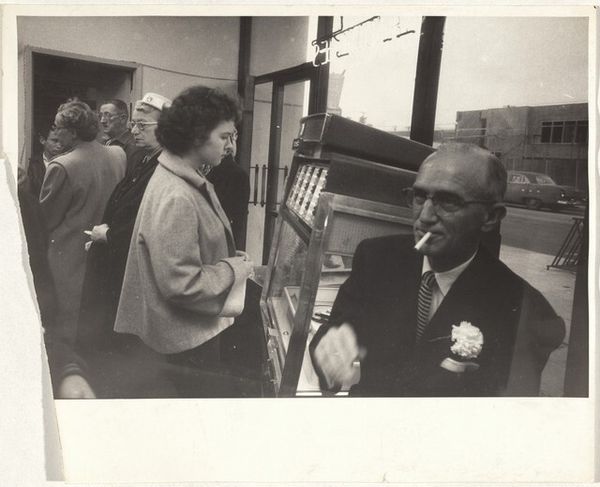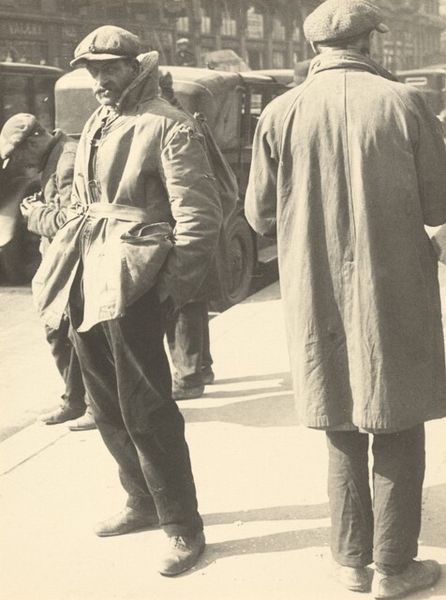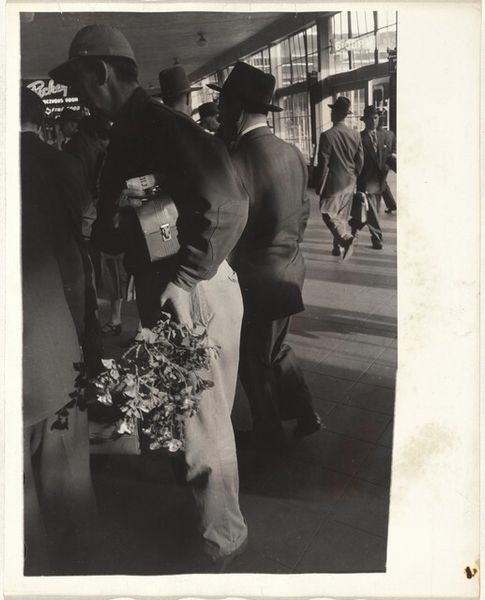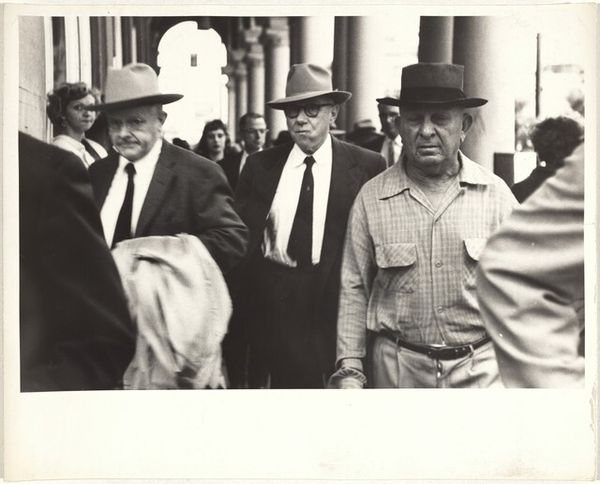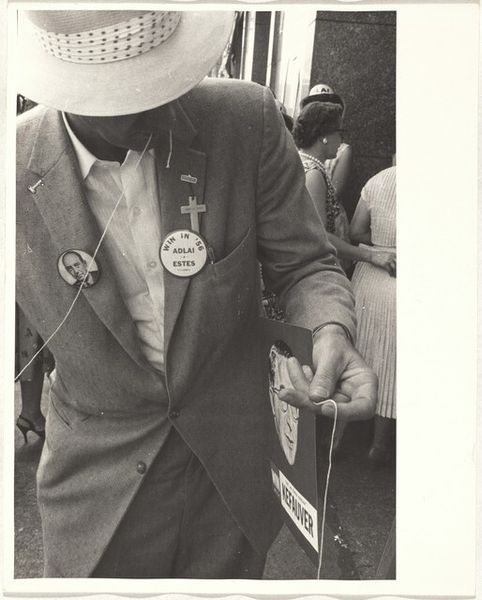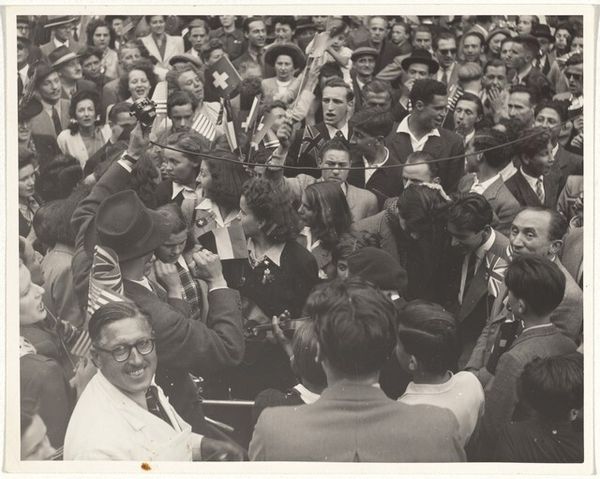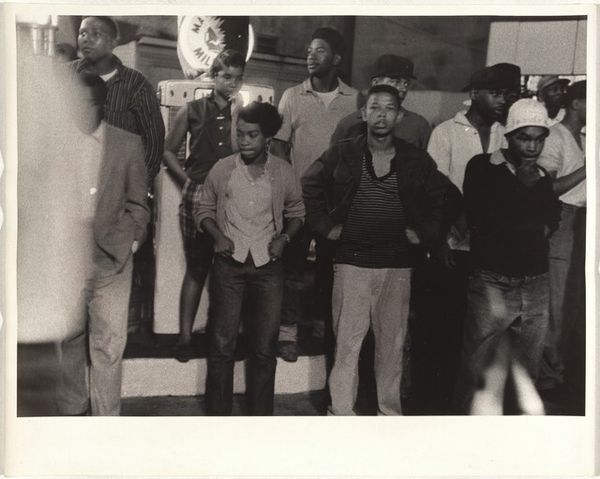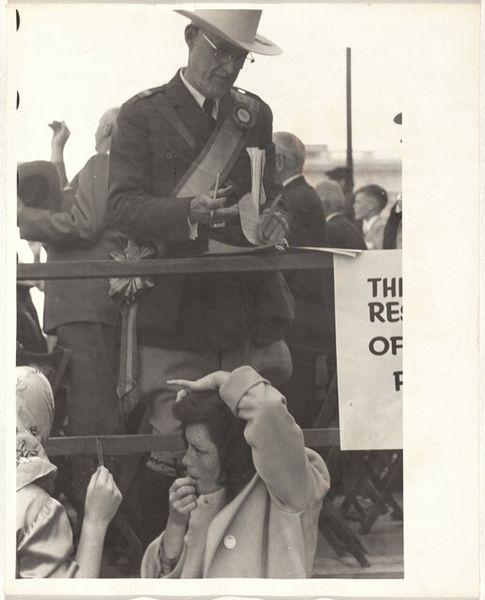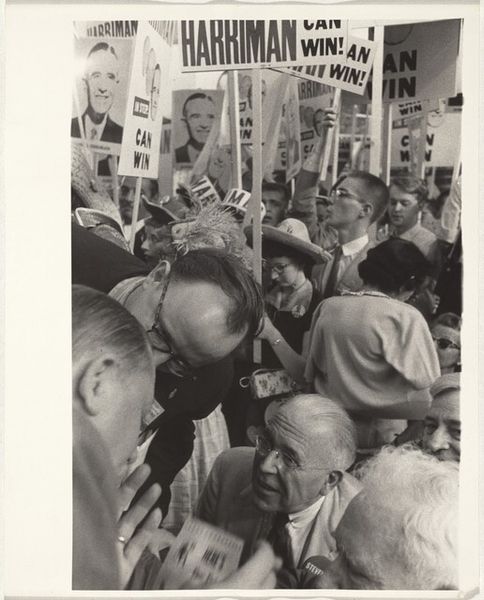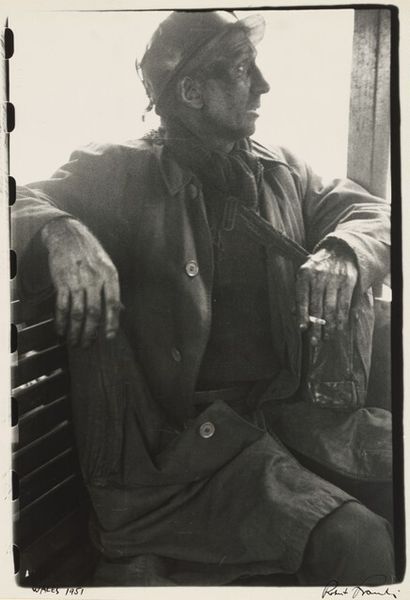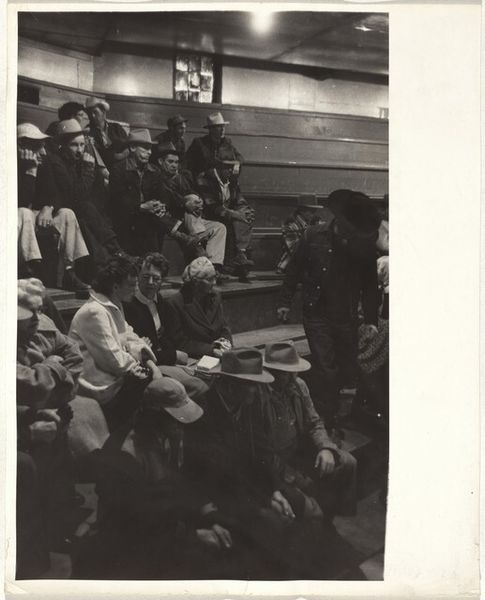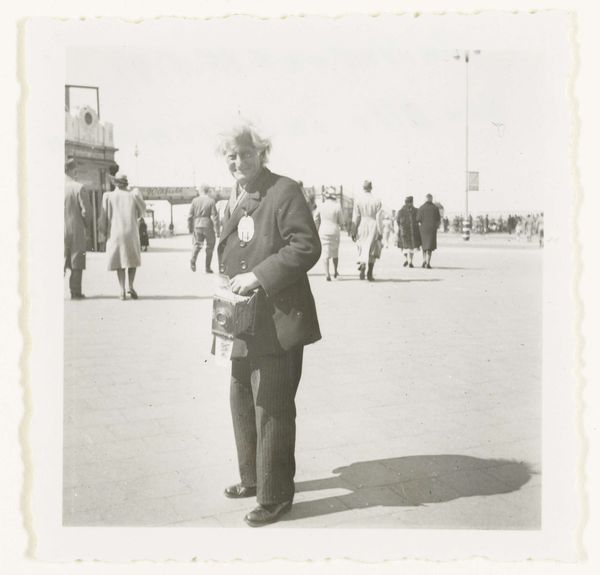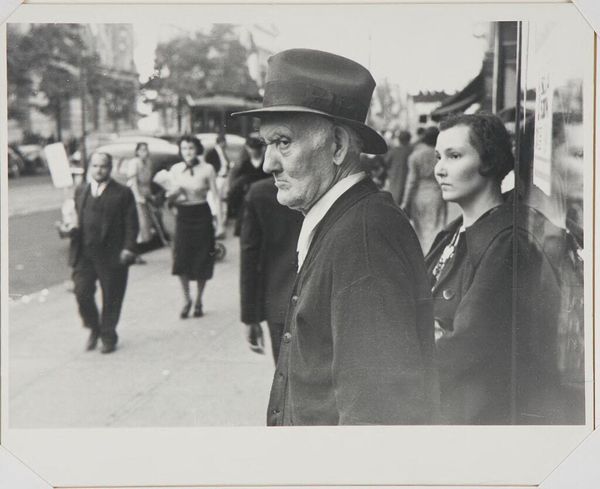
Dimensions: sheet: 25.2 x 20.3 cm (9 15/16 x 8 in.)
Copyright: National Gallery of Art: CC0 1.0
Curator: Robert Frank's "Rally--Chicago," a gelatin silver print from 1956, offers a glimpse into the political landscape of the era, doesn't it? Editor: It feels…dense. All these people pressed together, and that incredible light making them almost luminous against the darker crowd in the background. Makes you wonder what’s going through their heads. Curator: Indeed. Frank, of course, was interested in documenting America, but unlike previous social documentarians, his style was quite stark. Notice how he includes textual details – campaign signage, newspapers. What does that foregrounded newspaper clipping tell us, subtly endorsing a rival candidate amidst a Stevenson rally? It’s fascinating. Editor: It is cheeky! And so casual, as though this old man just picked it up from a nearby trashcan and wants the photographer to know. I imagine this fellow has his own particular point of view—stubborn even, perhaps against the flow of the march. What statement is he really trying to make by displaying the 'Nixon Man' so clearly? Curator: I think it underscores Frank’s perspective, positioning himself outside of mainstream America while examining the impact of consumer culture and popular politics on individual lives. Think about the paper itself: its material properties, how cheaply made it likely was, in contrast to the ideals on display at the rally. It challenges the grand narratives. Editor: And speaking of material, did Frank use a particular camera that was light or discrete? I always find his method curious, wandering streets like this, in broad daylight capturing these complex, fleeting interactions. I bet it becomes something so unexpected during developing—the darkroom is such an evocative and transforming medium to conjure these political feelings in a new, tangible way. Curator: That fits so well within the post-impressionist style that's a good label for his work: using real life, documentary-style, to hint at something greater, even internal and personal to the scene. Editor: And it gives you pause to really wonder: does anyone ever truly change their mind based on a single photograph? What end do photographs really achieve beyond capturing moments and forcing one or two interpretations on otherwise complex truths? What an intriguing snapshot into time that can also serve as a sort of existential contemplation on change! Curator: Well put. His photographs do more than just reflect reality.
Comments
No comments
Be the first to comment and join the conversation on the ultimate creative platform.
